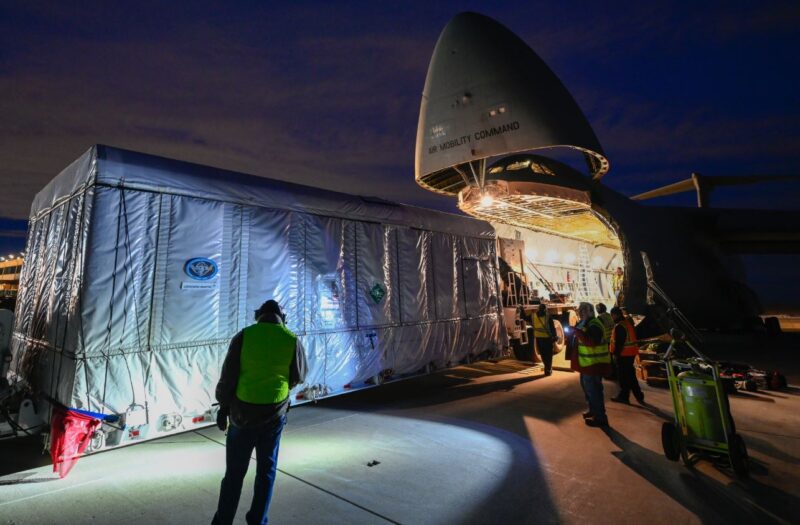
A new Geostationary Operational Environmental Satellite (GOES)-U is scheduled to launch this spring, marking the last of four planned National Oceanic and Atmospheric Administration (NOAA) weather satellites.
The satellite arrived at Kennedy Space Center in Florida this week, following its construction by Lockheed Martin. Once in space, it will provide insights to weather forecasters and meteorologists, increasing the accuracy of weather data across the U.S. and western hemisphere with clearer images of severe storms, hurricanes, wildfires and other hazards.
The first GOES-R GOES-R satellite transmitted more data in its first six months of operation than all previous GOES satellites combined. This final satellite will also include a unique compact coronagraph, which will be used to better characterize the Sun’s coronal mass ejections.
“As severe weather patterns increase with our changing climate, unparalleled data from these GOES-R satellites help people stay safe,” Jagdeep Shergill, Geo Weather programs director at Lockheed Martin, said. “The GOES-R satellites Lockheed Martin has created have revolutionized weather forecasting, and we’re looking forward to seeing how we can continue to support this capability for future NOAA missions.”
The satellite made its final terrestrial journey from Colorado to Florida as of Jan. 23, 2024. From there it was moved to Astrotech Space Operations in Titusville, Florida, where it will spend its last months undergoing testing, checkouts and encapsulation in its rocket firing before a scheduled April launch.
In the years ahead, Lockheed Martin will also handle two concept studies for the spacecraft bus and lightning mapper development of another flagship weather program from NOAA: the Geostationary Extended Observations (GeoXO) satellite system. That system will further expand weather observation capabilities with a focus on severe weather, emerging environmental issues and rising ocean temperatures.




